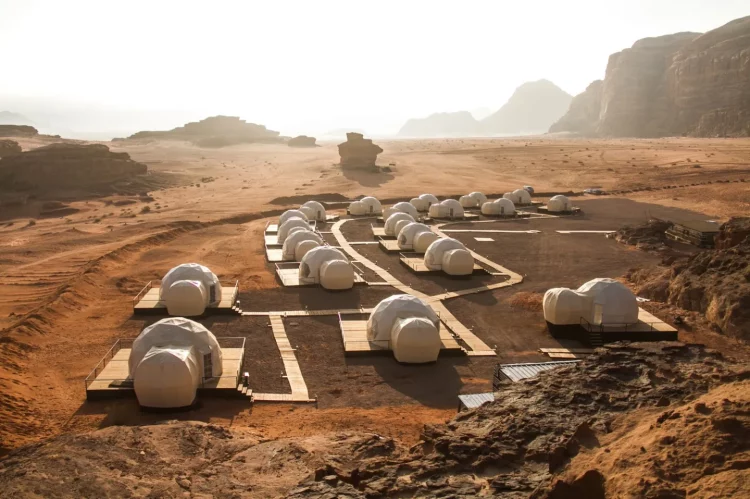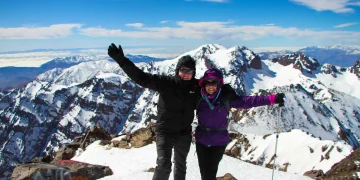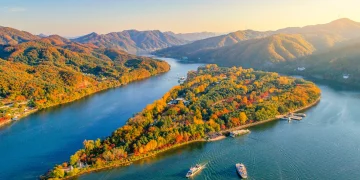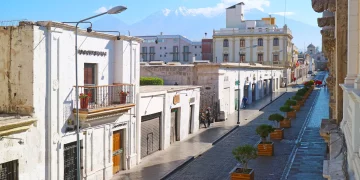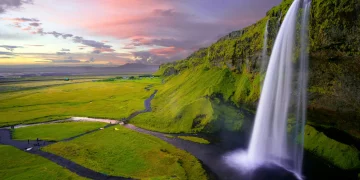The Thrilling Train Experience
In the desert, the train crawls forward. Three or four Arabs on fine horses, brandishing guns, give chase with gunshots echoing. A chase unfolds in the endless sea of sand. This isn’t a movie scene but an experiential train adventure, “Back to 1916”, in the Wadi Rum desert of Jordan. When it comes to Wadi Rum, the common introductions are often “the place on Earth that most resembles Mars”, “the filming location for many Western blockbusters like ‘Lawrence of Arabia’, ‘The Martian’, ‘Aladdin’, ‘Dune’, etc.”, and “the homeland of the Bedouins”. It is much more than that. As a dual – heritage site of culture and nature by UNESCO, the historical relics and desert wonders of Wadi Rum together tell the past and present of this land.
Reliving the Past
My companions and I arrived at the train station in the desert and boarded the train, sitting in an open – air carriage. On one side of the open – air carriage are benches, filled with tourists from all over the world. Next to us is a Spanish family of three. On the other side, sandbags are piled up to form a defensive line, and behind the sandbags is a machine gun mounted. The train moves slowly, and a man dressed as an Ottoman Empire soldier, with a long gun slung over his shoulder, comes to our carriage. He seems happy to be the star under the tourists’ cameras and poses majestically for everyone to take pictures.
The train continues its journey, and one might think that the appearance of the Ottoman Empire soldiers is all there is to “Back to 1916”. However, gunshots suddenly ring out. Three or four Arabs seem to emerge from the ground, chasing the train on horseback from a distance, while their comrades lie in ambush behind the sand dunes, shooting to provide cover.
The soldiers in the carriage have already lain on the sandbags, firing back. In the adjacent carriage, a tourist stands beside the machine gun and voluntarily joins the battle. The Arab riders are getting closer and closer to the train, shouting incomprehensible slogans, and the sand is flying wherever the horses’ hooves land. As the sun gradually sets, the Wadi Rum desert takes on a magnificent rose – red hue. With sporadic gunshots and high – pitched shouts in our ears, one truly loses track of time.
The train is “forced to stop”. The Arabs dismount from their horses, rush into the carriage, and capture the Ottoman Empire soldiers and the participating tourist. They are taken as prisoners of war and escorted to a jeep parked beside the train. We don’t know when the jeep appeared as our attention was previously completely drawn to the intense battle in front of us. How will this play continue? Just as doubts arise, the prisoners are released. The brave tourist returns to the train, and warm applause and cheers erupt in the carriage.
Later, we learned that 1916 holds a special significance for both the Arabs and the Wadi Rum desert. That year, the Great Arab Revolt broke out, a historic moment when the Arabs rebelled against Ottoman – Turkish rule and fought for national independence. This revolt also had a profound impact on the later political structure of the Middle East. The train adventure of “Back to 1916” recreates the scene during the Arab Revolt when Ottoman soldiers used the train to transport supplies for nearby garrisons but were ambushed by the Arabs during the journey, resulting in a failed mission.
The railway passing through Wadi Rum also has its own story. It is called the Hejaz Railway, built by the Ottoman – Turks in 1908. It starts from Damascus in Syria in the north, passes through Jordan, and ends in Medina in Saudi Arabia, with a total length of 1,300 kilometers. The Hejaz Railway was originally built to facilitate pilgrims’ pilgrimages. During the Arab Revolt, the Hejaz Railway was severely damaged and forced to stop operation. Now, only some scattered train stations and railway sections remain, still telling their short – lived past.
In Search of Lawrence
The Legend of Lawrence
In the West, Wadi Rum’s fame is directly related to “Lawrence of Arabia”. Lawrence was a British officer and diplomat who played a crucial role during the Arab Revolt in World War I. The vast and empty desert of Wadi Rum was the main backdrop of Lawrence’s activities at that time. In 1917, Lawrence was tasked with supporting the Arab Revolt. He established a close relationship with the Bedouin tribes living in Wadi Rum and won their trust. Based on his understanding of Bedouin culture and desert tactics, Lawrence played an important role in several attacks against the Ottoman Empire’s army. He documented all of this in his book, “The Seven Pillars of Wisdom”.
Lawrence’s experiences, especially his days in Wadi Rum, have always attracted travelers and history enthusiasts. Many people come to Wadi Rum to search for Lawrence’s footprints.
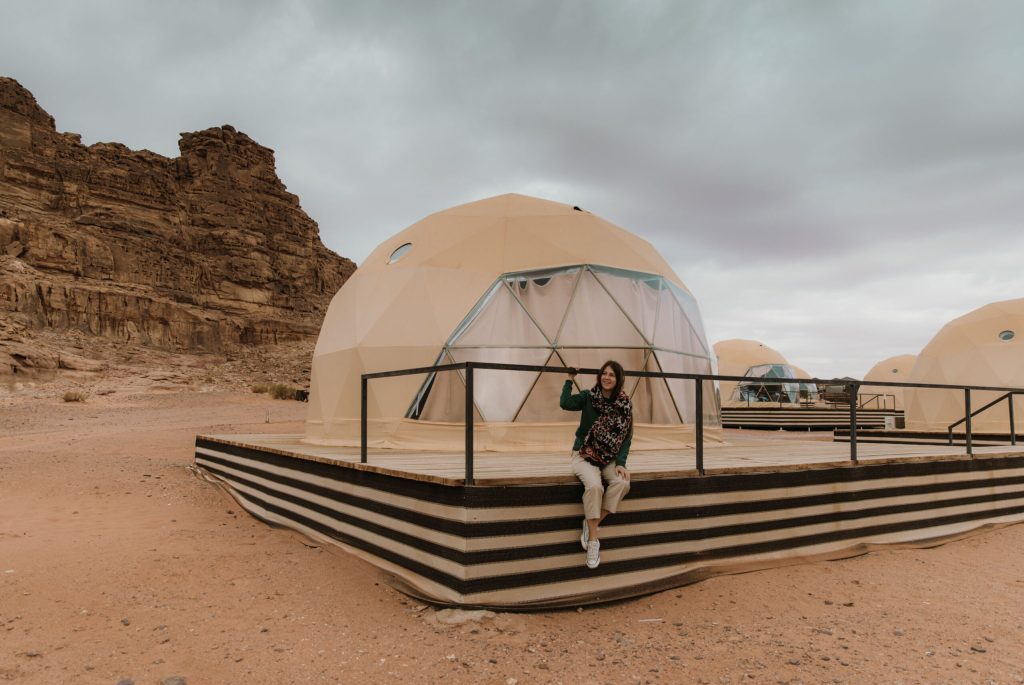
The Remnants of Lawrence’s Legacy
“The Seven Pillars of Wisdom” is one of the most famous sites. Soon after our vehicle entered Wadi Rum, the guide on the vehicle reminded us, “Look, those are the Seven Pillars of Wisdom.” Looking out, the seven huge rock pillars named after Lawrence’s work stand in the desert like artworks carved by nature. The quiet and vast desert adds a touch of mystery and solemnity to the Seven Pillars of Wisdom.
There is also Lawrence’s Spring. It is located near the narrow Qazali Canyon and is now mainly a watering point for camels. It is said that Lawrence, with an archaeology background, discovered this natural spring by deciphering Nabataean inscriptions. Lawrence’s House is a ruin of a stone house, which is believed to be Lawrence’s residence during his time in Wadi Rum. In addition, in the Tawagi Canyon in the northern part of the Wadi Rum desert, there are rock paintings related to Lawrence, which are said to commemorate his role in the Arab Revolt. Although these attractions all seem to be related to Lawrence’s story, they are still more at the level of folk legends, and it’s hard to consider them as real historical relics. However, they provide an angle for understanding the relationship between “Lawrence of Arabia” and Wadi Rum. After all, according to the account in “The Seven Pillars of Wisdom”, the desert gave Lawrence an unforgettable experience: “Life in Wadi Rum was a dual test of body and spirit, a constant struggle with the merciless environment, showing both its beauty and its terror.”
Overlooking the Valley of the Moon
The Breathtaking Desert Landscape
For those who come to the Wadi Rum desert for the first time, they will first be astonished by its incredible natural landscape. Since ancient times, Wadi Rum has been shaped by the brute force of Mother Earth. Rock paintings, inscriptions, and archaeological relics can be seen everywhere, indicating that humans have lived in Wadi Rum as early as 12,000 years ago. Among them, the mysterious Nabataeans, the builders of Petra, have lived here since at least the 8th century BC. Now, the main residents here are the Bedouins. Staying in Bedouin tents and eating their sand – roasted lamb has become a very distinctive and popular tourist project in Wadi Rum.
Looking down from a hot – air balloon nearly a thousand meters high at Wadi Rum, also known as the “Valley of the Moon”, the desert is colored into a huge palette with various shades of reddish – brown. The continuous and endless sand dunes, the high and low towering cliffs, seem to rise up from the boundless desert. If you travel through Wadi Rum in a jeep, you can also search for those magnificent natural arches, towering cliffs, weathered caves, and narrow canyons. The diverse landforms and reddish – brown hues together endow Wadi Rum with an almost fairy – tale – like scene.
Every scene in this barren desert stimulates people’s imagination, just as the entire valley evokes fantasies of distant places like Mars. “Lawrence of Arabia” was also deeply fascinated by it, describing Wadi Rum as “magnificent and boundless, with echoes wandering, like a sacred land”. However, the desert in Lawrence’s writing is not only beautiful but also quite complex, just like his observation of the situation in the Middle East. In Lawrence’s writing, tribal, ethnic, and religious conflicts in the Middle East are intertwined and difficult to resolve. Coupled with the attempts of outsiders to impose their will, there are often turbulences, conflicts, and unrest in this land, as we can see today.


